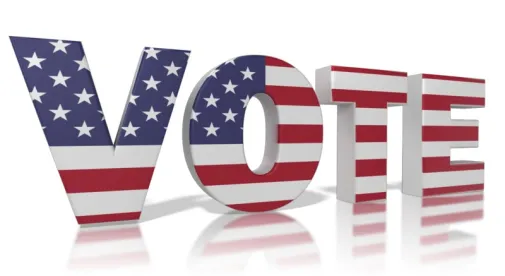During New York’s June primary races, local boards of elections grappled with the intake, collection, and canvassing of an unprecedented number of absentee ballots, resulting from certain emergency orders issued in response to the Coronavirus Disease 2019 (COVID-19) pandemic. Given this challenge, the state of New York recently enacted temporary and permanent measures to address the influx of mail-in ballots ahead of the general election.
Historically, New York allowed registered voters to vote by absentee ballot, provided that the voter attested to one of the relevant qualifying circumstances including, but not limited to, an election-day absence from the voter’s registered county or borough in New York City, or a physical disability or illness. Qualified voters could request an absentee ballot from the local board of elections no earlier than 30 days but no later than seven days ahead of the scheduled election.
In April, however, as the spread of COVID-19 led to shutdowns of many major businesses, schools, and gatherings in New York, Gov. Andrew Cuomo signed a series of executive orders, which, among other things, allowed all registered voters to vote by absentee ballot in New York’s June primary election. This resulted in over 400,000 absentee ballots cast in New York City alone during New York’s June primary election, with another 330,000+ cast throughout the rest of the state. The State Board of Elections indicated that in 2020, absentee voting on primary day made up nearly 40% of the total number of ballots cast. Reports of post office blunders, confusion during the canvassing process, and delayed election results caused lawmakers to pass a package in late July, aimed at preventing voter disenfranchisement by clarifying certain electoral procedures. Gov. Cuomo signed the package of reforms on Aug. 20, 2020, including:
Allowing Voters to Request an Absentee Ballot Due to Risk of Illness (Ch. 139)
Election law previously authorized voters to vote by absentee ballot due for limited enumerated reasons, including if: the voter had an illness or physical disability; the voter was hospitalized; or the individual was a primary caregiver of an individual who was ill or had a physical disability. Effective immediately, and continuing until Jan. 1, 2022, registered voters will also be allowed to request an absentee ballot where a voter may be unable to appear in person to vote because there is “a risk of contracting or spreading a disease that may cause illness to the voter or other members of the public.” In approving the legislation, the governor noted that the temporary change “is imperative – it will provide a safe mechanism for voting during a public health crisis to New Yorkers who are medically vulnerable, currently sick or in quarantine, or otherwise concerned about voting in-person and contracting COVID-19.” Moreover, a similar amendment will be made to ensure that the same standard applies to absentee ballot applications for upcoming village elections. Effectively, for 2020 elections only, any registered voter will be permitted to vote via absentee ballot.
Extending the Time to Request an Absentee Ballot (Ch. 138)
New York voters are immediately authorized to request absentee ballots for the upcoming general election. Without this amendment, voters seeking to cast a vote by absentee ballot would be prohibited from requesting an absentee ballot more than 30 days prior to the election. For purposes of this election cycle, the new law removes the reference to the 30-day timeframe, allowing voters to request an absentee ballot at any time until seven days before the scheduled election.
Clarifying Postmark Dates for Absentee Ballots (Ch. 140)
New York requires that all absentee ballots be received by the local board of elections within seven days of the election. To be valid, the absentee ballot must be postmarked on or before the date of the election. The new law clarifies that an absentee ballot will not be invalidated for lack of a postmark if the ballot displays a time stamp from the local board of elections indicating that the absentee ballot was received by the local board on or before the day following the election (Nov. 4, 2020). This law is temporary and will expire on Dec. 31, 2020.
In the two subsequent business days, Gov. Cuomo:
- Approved Legislation Requiring Notification to Voters of Deficient Absentee Ballots (Ch. 141)
Beginning with the Fall 2020 election, boards of elections will be required to inform absentee voters of certain deficiencies in their absentee ballots discovered before or at the time of the canvass proceeding; namely when an absentee ballot affirmation envelope (1) is unsigned by the registered voter; (2) contains a voter signature that does not correspond to the voter’s registration signature on file; (3) is missing the required witness mark; or (4) is returned without an affirmation envelope in the return envelope. Upon a determination of such deficiency, the board of elections must provide notice to the voter within one day of rejection, explaining why the absentee ballot has been rejected. The notice must inform the voter of a procedure to cure the deficiency and include an affirmation form to be submitted by the voter to cure the deficiency within seven days of the board’s mailing of the notice of deficiency. If the board of elections determines that the affirmation addresses the defect, the rejected ballot envelope would be reinstated. However, if there is a split among the board of elections as to whether the affirmation cures the defect, the voter’s absentee ballot affirmation envelope would be set aside for three days and then counted, unless otherwise directed through a court order. Additionally, if the board of elections invalidates an absentee ballot affirmation envelope and finds the defect is not curable, the board is required to notify the voter of such rejection within three days. Finally, the new law requires that if a board receives an unsealed absentee ballot affirmation envelope prior to the election, the board notify the voter of the defect and inform the voter of alternative options for voting or, if time permits, provide the voter with a new absentee ballot.
In approving the bill, the governor noted that “the Legislature’s vision for this bill cannot be realized on such short notice, [because t]he mandates on mailings and other notifications in this bill will impose a heavy operational burden on boards of election in the midst of the COVID-19 public health crisis, and incredibly close in time to the November general election.” While acknowledging that “New York must balance the right to vote with the need to ensure a timely, seamless and operationally sound election that leaves no doubt as to its outcome,” the governor determined that he needed to make temporary modifications to the law through an executive order to “ensure that this legislation can provide a cure opportunity for voters in the November general election, without relying so heavily on an already burdened mail system.”
- Issued Executive Order No. 202.58
The executive order issued on Aug. 24, 2020, focused on operations regarding the upcoming general election. Most notably, the executive order temporarily modified the new law regarding curing absentee ballot defects to:
| — | require a board of elections to notify the voter of any eligible deficiency within 24 hours of identifying the deficiency by phone or email (if available) and only provide notice by mail if the voter cannot be reached by phone or email; |
|
| — |
require that a board of elections provide a five-day cure period for any eligible deficiency, instead of a seven-day cure period, if such absentee ballot is received after Nov. 3, 2020; and |
|
| — |
provide that “no cause of action shall be maintained against a board of elections if, . . . [for the 2020 general election], [a deficiency] notice is not able to be made within the [relevant] time period . . . after a good faith effort, and through no fault of the board of elections.” |
In addition to temporarily amending Chapter 141, the executive order also allows every active or inactive voter who is eligible to vote in the Nov. 3, 2020, election to request an absentee ballot by “phone or internet or electronically.” The local board of elections receiving such request is required to keep a record of the request, and is authorized, upon request of the voter, to complete the absentee ballot application on behalf of the voter. The executive order also allows local boards of elections “to procure and provide absentee ballot applications, absentee ballots, envelopes, mail notification cards” by methods other than mail, in order to meet the deadlines established in the executive order.
Other key provisions of the executive order include requiring all local boards of elections in the state to:
| — | use a new State Board of Elections issued “uniform envelope for absentee ballots” that clarifies where the voter must sign for the envelope to be valid. The new envelope must be issued by Sept. 8, 2020; |
|
| — |
“take all steps possible to count ballots as soon as possible, including a review of absentee or military ballot envelopes prior to Election Day.” This authority also grants the local boards authority to make objections to the absentee or military ballots prior to Election Day; |
|
| — | compare affidavit ballot information with the state board data to prevent any appearance of voter fraud, within 48 hours after the election; |
|
| — |
send an informational mailing to every registered voter by Sept. 8, 2020, summarizing key deadlines for voters, as well as how to determine registration status; and |
|
| — | submit staffing plans and needs for early voting, election day, and post-election canvassing operations to the New York State Board of Elections by Sept. 20, 2020. |
Based on these new obligations, boards of elections are going to need to change their historical practices, particularly with regard to the timing of reviewing absentee envelopes. Many boards traditionally would wait until after Election Day to start reviewing the validity of the absentee ballot envelopes. Now, boards will need to conduct this exercise on a rolling basis, in advance of Election Day, but only begin reviewing the ballots after Election Day. Regardless, the addition of the opportunity to cure may significantly delay the review of absentee ballots. Accordingly, due to the volume of absentee ballots that are expected to be cast this November, many candidates will be unable to determine the outcome of their election for weeks, or potentially months, after Election Day.





 />i
/>i

